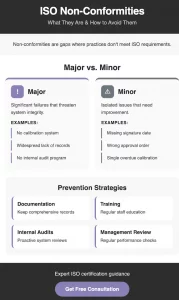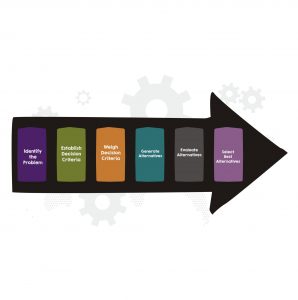If you’re looking into environmental standards for your business, you’ve probably come across ISO 14001 and heard about the newer Net Zero ISO standard. Both sound important, but they actually do different things. Let us walk you through what each one offers and help you figure out which one makes sense for your situation.
ISO 14001 Covers Everything Environmental
ISO 14001 is used by more than 300,000 organizations worldwide, which tells you something important: this standard works, and businesses trust it.
What sets it apart is its flexibility. It doesn’t tell you exactly what environmental targets to hit. Instead, it helps you build a system that fits the way your business works. For example, a tech company might focus on reducing energy use in data centres, while a factory might prioritise cutting waste or managing wastewater. The standard adapts to your goals and challenges.
It covers a wide range of environmental issues, including energy use, waste, water, air quality, soil protection, and even how your operations affect local wildlife. It also looks at the environmental impact of your suppliers and what happens to your products once they’re in the hands of customers.
The process is practical. You identify how your business affects the environment, set goals to improve, and put systems in place to manage that. This includes writing clear policies, training staff, tracking performance, and finding ways to keep improving. The aim is to build a strong, reliable process, not just chase numbers.
An independent auditor checks your system every year, and every three years you go through a full review. They’re not there to see if you’ve cut emissions by a certain percentage. They’re checking that you have a working system in place to manage your environmental impact properly.
Also read: ISO 14001 Implementation Checklist: A Complete Guide to Environmental Management Certification
Net Zero ISO Focuses Only on Carbon
The Net Zero ISO standard tackles a completely different problem. While ISO 14001 covers everything environmental, Net Zero ISO focuses specifically on greenhouse gas emissions and climate change.
It starts with measuring your emissions in three areas. First are your direct emissions, like fuel used in company vehicles or factory equipment. Second are indirect emissions from the energy you buy, such as electricity. Third, and often the hardest, you need to account for emissions across your whole value chain. That includes your suppliers, business travel, employee commutes, and how customers use your products.
Unlike other frameworks, this standard requires science-based targets. You can’t just set goals that sound good, your targets must align with the global goal of keeping temperature rise below 1.5°C. You’re expected to reach net zero by 2050 at the latest, with clear milestones every two to five years. The method for calculating your reduction pathway is fixed, and you need to follow it closely.
When auditors check your compliance, they focus on hard evidence. They look at how you calculate your emissions, whether you’re meeting your targets, and if your offset claims are valid. The goal is to prove you’re actually reducing emissions—not just managing the process or talking about it.
Quick Comparison Table
| Aspect | ISO 14001 | Net Zero ISO |
| Main Focus | All environmental impacts | Greenhouse gas emissions only |
| What It Covers | Water, waste, energy, biodiversity, chemicals, soil | Carbon emissions (Scope 1, 2, and 3) |
| Who Sets Targets | You decide based on your business | Science sets them (1.5°C pathway) |
| Flexibility | High – adapt to your context | Low – strict requirements |
| Success Means | Having working management systems | Achieving emission reductions |
| Verification Checks | Your processes and procedures | Your actual emission numbers |
| Timeline | Continuous improvement at your pace | Net zero by 2050, targets every 2-5 years |
| Audit Frequency | Annual surveillance, 3-year recertification | Ongoing performance monitoring |
| Best For | Companies needing broad environmental management | Companies with climate commitments |
| Regulatory Alignment | All environmental regulations | Climate-specific regulations |
| Current Status | Fully established standard | Guidelines now, full standard by 2025 |
| Global Adoption | 300,000+ organizations | Growing rapidly |
| Cost of Implementation | Moderate – depends on scope | Higher – requires detailed carbon accounting |
| Offset Requirements | Not addressed | Strict quality rules, last resort only |
| Integration | Works with ISO 9001, ISO 45001 | Standalone or combines with ISO 14001 |
The Key Differences
Scope Differences
The biggest difference between these standards is scope. ISO 14001 takes on environmental management from every angle, including water pollution, chemical spills, waste management, energy use, biodiversity loss,and more. If your business has diverse environmental impacts, ISO 14001 addresses them all in one framework.
Net Zero ISO only focuses on greenhouse gases. The narrow focus means you get detailed, specific requirements for carbon management. You’ll find exact methods for calculating emissions, setting targets, and measuring progress. But if you’re looking for help with water management or waste reduction, you won’t find it here.
Setting Your Targets
ISO 14001 gives you control over your environmental objectives. You look at your impacts, think about what stakeholders expect, and set targets that make sense for your business. The standard says you need to improve, but you decide what improvement means for your organization.
Net Zero ISO takes away that flexibility entirely. Climate science determines your targets, not business considerations. Everyone using the standard works toward the same 2050 deadline which means that companies can’t hide behind weak targets or extended timelines.
Measuring Success
With ISO 14001, success means having effective environmental management processes. You’ve identified your impacts, trained your staff, and created systems for continuous improvement. The pace of that improvement depends on your situation, and as long as the system works and drives improvement, you’re succeeding.
Net Zero ISO defines success differently. Good processes mean nothing if emissions aren’t falling. You need quantified reductions that match your science-based targets, and missing your targets means failing the standard, regardless of how good your management systems look on paper.
Getting Verified
Both standards use third-party auditors, but they look for different things. ISO 14001 auditors examine your management system. They review procedures, interview employees, and watch how you operate. They want to confirm your environmental management system functions properly and drives improvement.
Net Zero ISO auditors focus on hard data. They scrutinize emission calculations, check your math, and verify you’re actually reducing emissions as claimed. They examine evidence for every reduction you report and validate the quality of any offsets you’ve purchased.
When You Need ISO 14001
Starting Your Environmental Journey
If your organization lacks environmental programs, ISO 14001 provides the perfect foundation. You’ll learn to spot environmental impacts, engage stakeholders, and build management capabilities. The flexible framework meets you where you are and lets you improve at a manageable pace.
Managing Multiple Environmental Issues
Hospitals deal with medical waste, water use, energy consumption, and chemical management. Universities manage everything from lab chemicals to campus biodiversity. ISO 14001 handles all these issues within one system, saving you from implementing multiple specialized standards.
Meeting Broad Regulatory Requirements
Environmental laws cover water discharge, air quality, waste disposal, and chemical handling. ISO 14001 helps you track requirements, maintain compliance, and prove you’re managing things properly. One system addresses all your regulatory needs.
Building Integrated Management
If you already have ISO 9001 for quality or ISO 45001 for safety, adding ISO 14001 makes sense. The standards share the same structure, making integration straightforward, so your team manages one cohesive system instead of juggling separate programs.
When You Need Net Zero ISO
You’ve Made Public Climate Promises
If you’ve announced net zero targets to investors, customers, or the public, you need a credible framework for delivery. Net Zero ISO provides the structure and verification to prove you’re taking real action.
Climate Rules Apply to Your Business
Carbon taxes, emissions trading, and climate disclosure rules are spreading globally. Net Zero ISO aligns with these regulatory frameworks. Your carbon management approach satisfies both voluntary commitments and legal requirements.
Investors Want Climate Action
Green bonds, sustainability-linked loans, and ESG-focused investments require verified climate action. Net Zero ISO gives investors the transparency and credibility they demand. Your verified progress toward science-based targets improves access to favorable financing.
You Need Supply Chain Decarbonization
If you’re working to reduce supply chain emissions, you need a robust framework. Net Zero ISO provides methods for measuring Scope 3 emissions, engaging suppliers, and tracking progress across your value chain.
Why Many Organizations Choose Both
Here’s something important: you don’t have to pick just one standard. Many successful organizations use both, and they work well together.
The standards actually complement each other nicely. ISO 14001 gives you the management system foundation, including procedures for identifying impacts and engaging stakeholders. These same capabilities support your Net Zero ISO implementation. You’re building on existing systems rather than starting over.
If you go this route, timing matters. Organizations new to environmental management often start with ISO 14001. You build basic capabilities first, then add climate-specific targets through Net Zero ISO. But if climate action is urgent for your business, you might implement Net Zero ISO first and expand to broader environmental management later.
Finding Your Way Forward
Your choice depends on where you are today and where you need to be tomorrow. The key is to start somewhere. Environmental leadership has shifted from nice-to-have to business essential. Whether you choose one standard or both, you’re positioning your organization for success in a world where environmental performance increasingly determines business outcomes.
Ready to take the next step? Getting certified doesn’t have to be overwhelming. Our team has helped hundreds of businesses navigate both ISO 14001 and Net Zero ISO certification. We’ll assess your needs, recommend the right approach, and guide you through implementation at a pace that works for your business.
Request a free consultation and discover how straightforward certification can be with the right partner.





